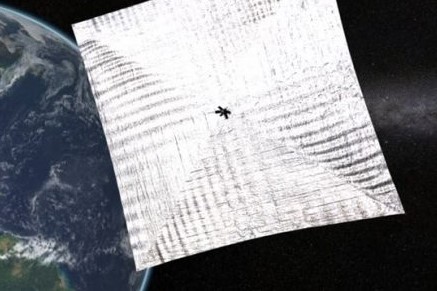July 30, 2019 – On June 25th a CubeSat was launched on the SpaceX Falcon Heavy as one of 24 different satellites in the payload manifest. That CubeSat was borne out of an idea that has been featured in space science fiction novels and short stories – that you could sail in space.
A crowdfunded project from The Planetary Society, this CubeSat was given the name LightSail 2. The idea behind LightSail 2 is simple. Because light consists of photons traveling from a light source, in this case, the Sun, they possess momentum. And although photons have no measurable mass, when they contact a surface they can transfer their momentum to that object. Based on this reality, the CubeSat unfurled its sail to demonstrate just how sailing in space can work.
LightSail 2 isn’t powered by rocket fuel or thrusters. Instead, it uses the free energy of photons to push it along. And because it is traveling in the vacuum of space there is no resistance. Over time the sail moves faster and faster.
How can LightSail 2 control its direction? Just like a sailboat that tacks into the wind to find the right angle to push it along, LightSail 2 can change the angle of its sail to alter its direction.
How practical is using sails for propulsion in space? If you consider the propulsion comes without the use of any type of fuel, adding solar sails to spacecraft to accelerate them away from Earth into solar orbits makes a lot of sense.
LightSail 2, when launched, was a CubeSat about the size of a loaf of bread, and weighed 5 kilograms (11 pounds). When the sail unfurled in this past week the satellite went from being 34-centimeters (13.4 inches) long to a sail, 4 meters (13 feet) by 5.6 meters (18.4 feet), with a total area measuring 32 square meters (344 square feet). At that size you can catch a lot of photons.
What kind of speeds can you get from this type of space propulsion system? With a big enough sail deployed in Earth orbit, you can theoretically travel at a significant speed. LightSail 2 is being powered by photons from the Sun. At 32 square meters, it can theoretically accelerate at a continuous rate of 0.058 millimeters per second squared, which means over time it picks up speed so that within a month it could be traveling at 549 kilometers (341 miles) per hour.
But if we were to use a laser beam from Earth to send a stream of photons to push LightSail 2 we could increase its rate of speed more dramatically.
The idea proposed by the late Stephen Hawking, involved a fleet of nanosatellite solar sails being pushed by Earth-based lasers on a trip to Alpha Centauri, our nearest neighbouring star system. With $100 million USD from billionaire Yuri Milner and backing from Facebook’s Mark Zuckerberg, the Breakthrough Starshot project was formed in 2016. If deployed in the next few decades it would mean within 20 years we would reach Alpha Centauri sending pictures and data back on beams of light. It would be a one-way mission.
But staying more local, solar sails like LightSail 2 give us the means to explore our neighbours in the Solar System inexpensively. Once these sailing spacecraft are deployed they will require no onboard chemical propulsion to move freely across space. And even though photons from the Sun diminish in concentration as the sails reach the outer edges of the Solar System, the momentum gained at the beginning of each journey will be sufficient to get them to Pluto and beyond with only the pull of gravity from planets and the angle of sail deployment altering their trajectories.
















